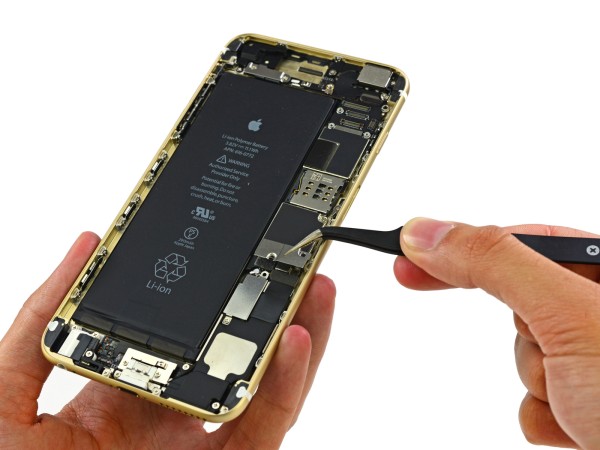
Let’s not delude ourselves here: Apple’s iPad event was spectacularly dull. You just know it’s going to be anticlimactic when Craig Federighi forces us to sit through 30-plus minutes of iOS and OS X news before Tim Cook was allowed to unveil the — big surprise — thinner and lighter iPad Air 2, and the sniveling footnote that is the iPad Mini 3. In fact, there is one interesting feature of the new iPads — but it was relegated to a page on the Apple website, rather than shown off on-stage. It’s called the Apple SIM, and it’s the death knell of the humble — if rather annoying — SIM card.
Apple has always had it in for the SIM card. Ever since the first iPhone, which used a fiddly paperclip-actuated SIM holder, Apple has shown that it won’t be beholden to clunky, old, or slow-moving technologies that it has no direct control over. With the original iPad, Apple was the first major device maker to move to the smaller micro-SIM (3FF) standard — and in 2012, Apple forced through a new nano-SIM (4FF) and was again first to market with the iPhone 5. Even now in 2014,

The evolution of the GSM SIM card. It’s hard to believe that the SIM was originally a credit card sized piece of plastic. Shown here, from left to right, are the standard SIM (1FF), mini (2FF), micro (3FF), and nano (4FF).
In each successive case, it has always been about making Apple products smaller, thinner, and lighter than the competitors. SIM cards, with their fixed dimensions and the removable tray, are a straight-up design constraint. There’s no getting around it: As it stands, you simply cannot make a device thinner than a SIM card tray, and a significant amount of design and manufacturing time has to be invested into placing the SIM slot (both on the logic board and externally on the chassis) and ensuring it’s reliable. Moving parts are thebane of industrial design.
There is an alternative to the SIM card, of course: the embedded-SIM. Rather than including a removable SIM card and tray mechanism, the manufacturer can solder a SIM card permanently onto the device. Not only does this remove the need for a SIM card tray, but it also allows for the SIM itself to be reduced to just a tiny chip on the logic board (there isn’t actually much in a SIM card, but because it has to be held by clumsy human hands they can’t be shrunk down much further than the nano form factor). Way back in 2012, when ETSI started working on embedded-SIM, Apple showed a clear interest in the new standard — and I wouldn’t be surprised to see the iPhone 7 or iPad Air 3 debut without a discrete SIM card.
For the time being, though, Apple has the next best thing: The Apple SIM. In the US and UK, the LTE versions of the iPad Air 2 and iPad Mini 3 will come with a reprogrammable SIM card — the so-called Apple SIM — that can switch to different carriers via the Settings menu in iOS. In theory, this allows you to switch between your AT&T contract and perhaps a pre-paid T-Mobile deal, to get the best of both worlds. In the future, when the Apple SIM inevitably rolls out to the iPhone (presumably the iPhone 7) maybe you’ll be able to open up Settings and select one carrier for cheap international calls, and then switch back to your main carrier for data. And of course, when you travel, rather than having to hunt down a local SIM card, Apple SIM would let you easily use a local carrier for cheap data and calls.

Prior to the iPhone, it was all about removing the battery to insert the SIM card — a constraint that Apple didn’t want to adhere to
The concept of a software-programmable SIM is certainly very cool, and a whole lot more revolutionary than the new gold color option or the inclusion of last year’s Touch ID sensor.
The problem, of course, is that today’s Apple SIM is clearly just a waypoint towards a future where the SIM card is removed from the equation entirely. It might be the iPhone 6S, or maybe the iPhone 7, but eventually Apple will do away with the physical SIM card and tray, replacing it with a tiny chip on the logic board and a SIM/carrier selection screen within iOS. If Apple does it properly and includes every carrier and MVNO you might ever want to use, then we have nothing to worry about — in fact, that actually sounds like a better solution than slotting in new SIM cards.
If Apple exerts some kind of control over Apple SIM, though, or is somehow tardy or restrictive over adding carriers to the selection screen, then you might soon find yourself lamenting the death of the SIM card — for ultimately, that is what this is all about. Apple has forced the adoption of smaller and smaller SIM card standards with the success of the iPhone and iPad, and I see no reason why it would stop with the nano-SIM. If Apple kills off the SIM card, then other device makers will surely follow suit.






.jpg)
.jpg)
.jpg)
.jpg)
.jpg)
.jpg)
.jpg)
.jpg)


.jpg)
















